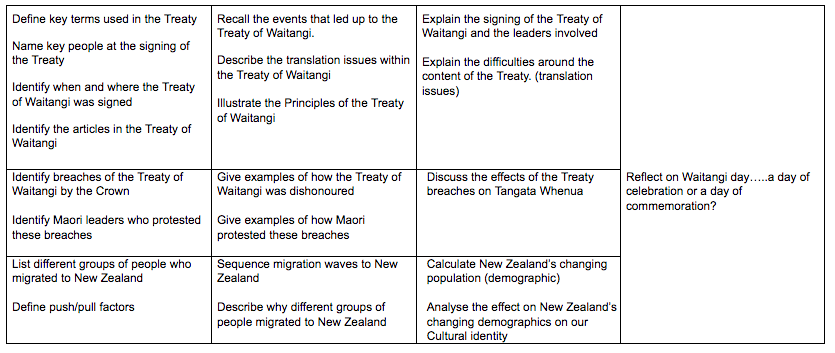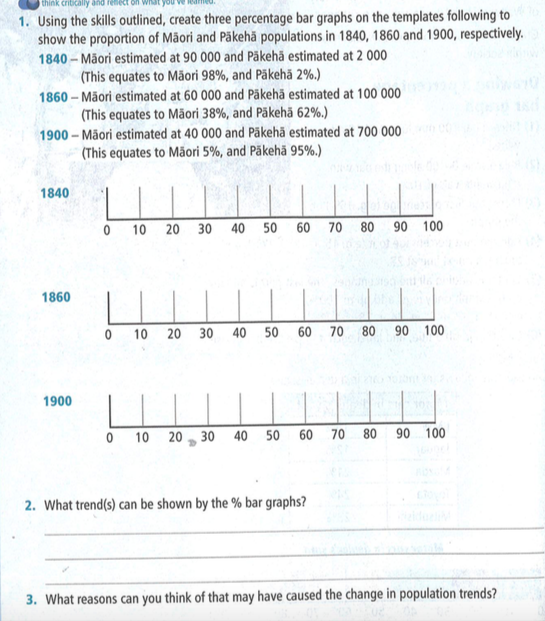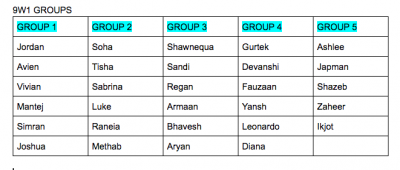Term 1 Week 5
Section outline
-
Term 1: Turangawaewae - My place to stand in NZ
EXPLORE / TŪHURA learning intentions:
- We are EXPLORING...NZ's unique bicultural society by interpreting the Treaty of Waitangi
- We are EXPLORING...NZ's bicultural society by recognising the importance of the Treaty of Waitangi and its impact on Tangata Whenua
- We are EXPLORING...NZ's bicultural society by investigating our changing demographics
Success Criteria: I can/have...

Activities:
- Homework check - the Treaty Text - answers on PDF below
- Revision - Translation issues
- PDF files & label notes below
- Kahoot
- Quizlet - intermediate
- News VR items - Extension - Translation issues - https://nzhistory.govt.nz/politics/treaty/read-the-Treaty/differences-between-the-texts
- Changing Population - Percentage Bar graph activity - exercise book

- Timeline - what caused this dramatic population change?
Immigration timeline - since 1840 - cause of the dramatic demographic change
https://www.parliament.nz/en/pb/research-papers/document/00PLSocRP08011/immigration-chronology-selected-events-1840-2008 - Treaty of Waitangi - Welcome to NZ !!
- Celebrating Waitangi day - https://my.christchurchcitylibraries.com/kids-treaty-zone-waitangi-day/
- NZ's Waitangi day 2020 - https://www.theguardian.com/world/gallery/2020/feb/06/new-zealands-waitangi-day-2020-celebrations-in-pictures
THE TREATY OF WAITANGI AND IMMIGRATION IN 1840
The Treaty is recognised as the first immigration agreement between Maori and Pakeha (European settlers). The
Treaty originally allowed settlers to immigrate peacefully to New Zealand under the British flag. The Treaty was important, firstly, to control the thousands of future emigrants to Aotearoa New Zealand, and secondly, to protect the rights of Maori people. The benefits to both parties were clear – settlement rights for Pakeha and the natural right of the tangata whenua (the people of the land) would be respected and affirmed.THE TREATY OF WAITANGI AND IMMIGRATION IN THE 21ST CENTURY
When you come to live in Aotearoa New Zealand, you should prioritise getting to know about the Treaty, as it will help you to
- understand the nature of society within Aotearoa New Zealand
- realise the significance of the Treaty within every aspect of life in Aotearoa New Zealand.
Follow Up Tasks:

